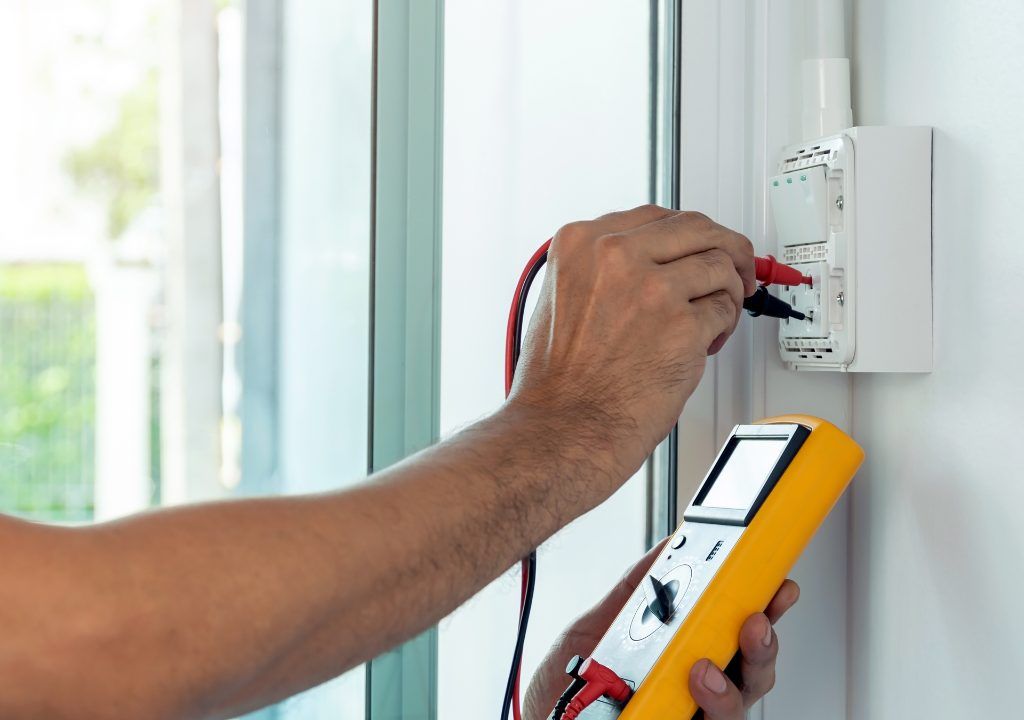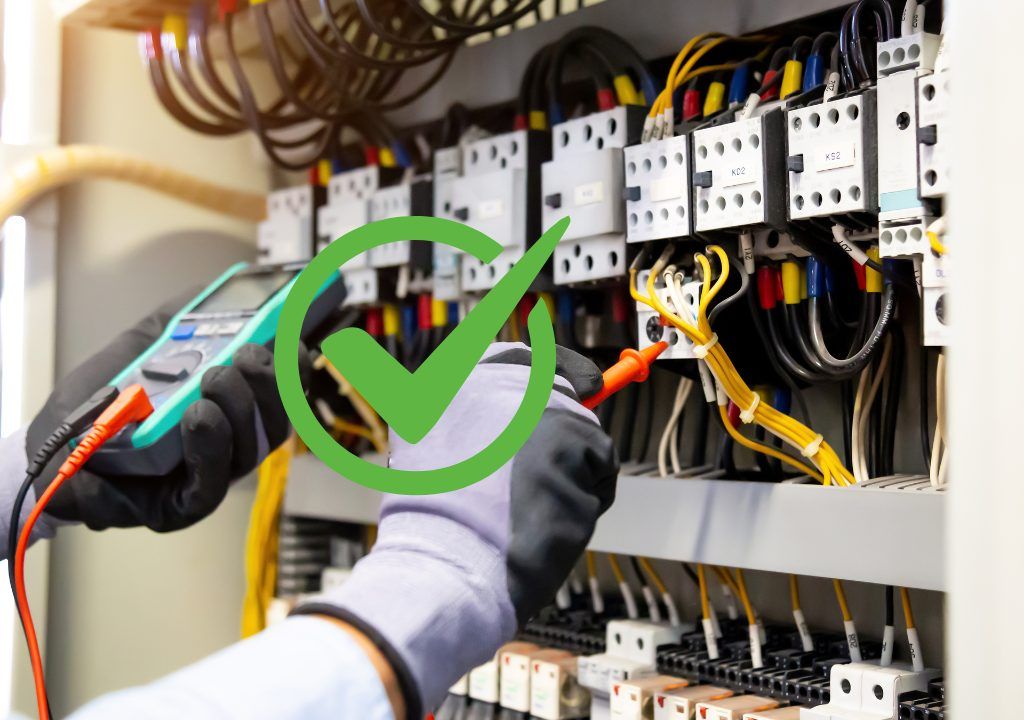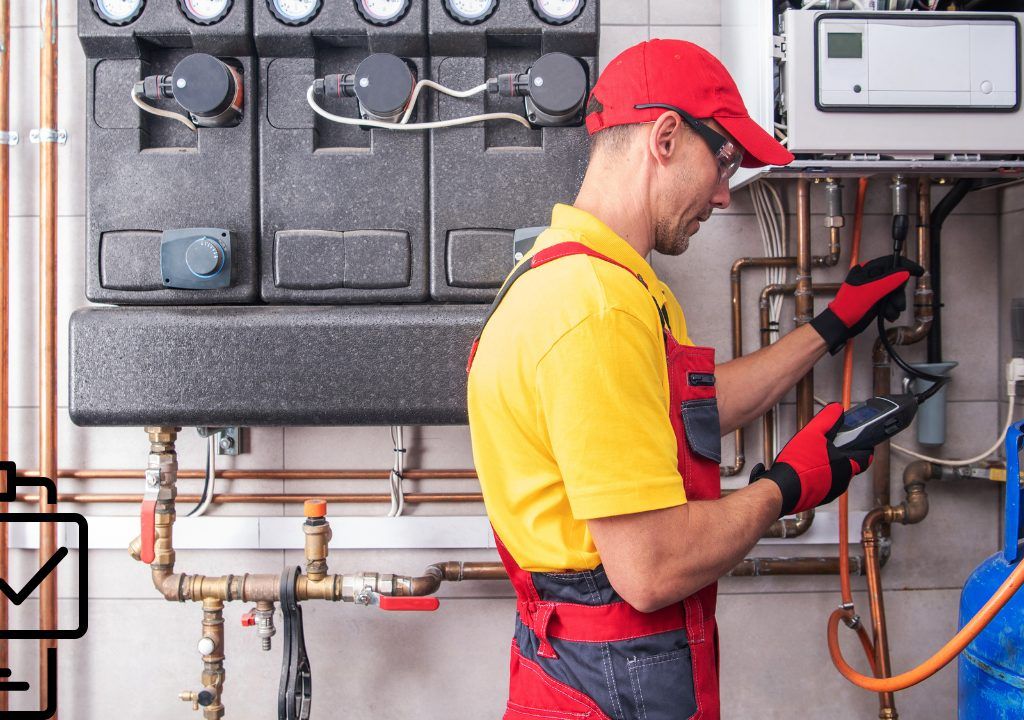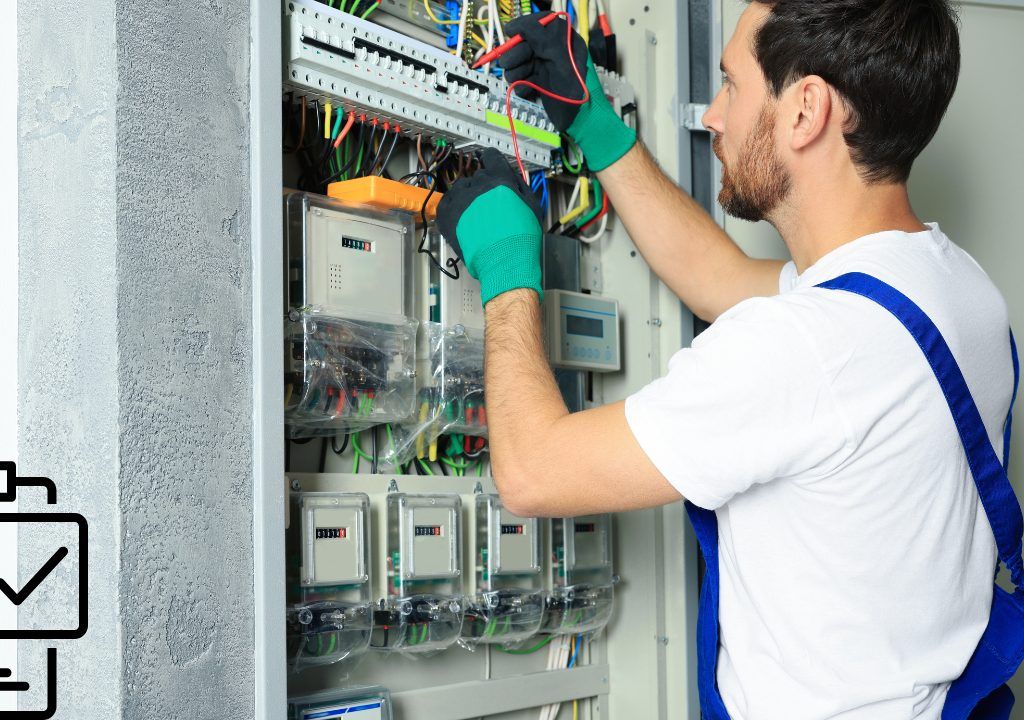
In the realm of workplace safety, one question often lingers: what exactly is PAT testing, and why does it merit attention?
Well, let me share that PAT testing isn’t merely a routine task but a critical element in upholding a secure environment for all.

The rationale behind why PAT testing should be a priority might surprise you; it extends far beyond mere compliance.
Understanding PAT Testing
Understanding Portable Appliance Testing (PAT) ensures workplace safety through thorough examination and testing of electrical appliances. Safety measures are paramount in preventing accidents caused by electrical hazards. Risk assessment plays a crucial role in determining the frequency and extent of equipment inspection. By identifying potential hazards through PAT testing, workplace compliance with safety regulations is ensured.
The process involves a comprehensive evaluation of portable electrical devices, focusing on potential risks and hazards. Through visual inspection and specialized testing procedures, PAT testing aims to mitigate the dangers associated with malfunctioning equipment. By adhering to strict testing protocols, the likelihood of accidents such as fires, burns, and electric shocks is significantly reduced.
Regular PAT testing not only safeguards individuals but also maintains operational continuity by minimizing disruptions caused by equipment failures. Ensuring workplace compliance through thorough equipment inspection and testing is essential for creating a safe and secure environment for all individuals involved.
Significance of PAT Testing
By thoroughly assessing portable electrical devices for potential risks and hazards, PAT testing plays a vital role in ensuring workplace safety and compliance with electrical regulations. The significance of PAT testing lies in providing safety assurance, mitigating risks, ensuring electrical compliance, enhancing workplace security, and offering various testing benefits. Here is a breakdown of why PAT testing is crucial:
| Significance of PAT Testing | Description |
|---|---|
| Safety Assurance | Certifies safety of portable devices |
| Risk Mitigation | Reduces risks to users and equipment |
| Electrical Compliance | Ensures adherence to safety regulations |
| Workplace Security | Enhances safety within the workplace |
| Testing Benefits | Prevents accidents and costly repairs |
PAT testing is not just about compliance; it is about protecting individuals from potential harm, ensuring operational safety, and maintaining a secure working environment. The comprehensive testing procedures and frequency requirements are designed to uphold the highest safety standards and prevent accidents related to electrical appliances.
PAT Testing Procedures

Commence the PAT Testing Procedures with a thorough visual examination to assess the condition of electrical appliances. This step is crucial to identify any visible damage or issues that may indicate potential hazards. Following the visual inspection, proceed with the testing phase using specialized equipment designed for this purpose. Testing equipment plays a key role in evaluating the electrical safety of appliances by conducting tests such as Earth Bond/Continuity, Insulation, Differential Leakage, and Load Test.
During the PAT Testing Procedures, it’s essential to adhere to safety measures to prevent accidents and ensure the well-being of individuals. Being aware of potential electrical hazards and understanding how to mitigate them is paramount. Compliance standards must also be met to guarantee that the testing procedures align with legal requirements and industry regulations.
Moreover, implementing proper maintenance practices is necessary to uphold the longevity and safety of electrical appliances. By following these steps diligently, PAT Testing Procedures can effectively enhance workplace safety and prevent electrical incidents.
Items Subject to PAT Testing
Beginning with a thorough visual examination to assess the condition of electrical appliances, the next step in the PAT Testing Procedures is identifying the items subject to PAT Testing. When determining what falls under the testing requirements, various equipment categories must be considered alongside safety standards and compliance factors. However, certain items might be exempt from the rigorous testing processes. Below is a breakdown of items typically subject to PAT Testing:
| Equipment Category | Testing Requirements | Safety Standards |
|---|---|---|
| IT Equipment | Regular Testing | IEC 60950 |
| Power Cords | Periodic Checks | BS 1363 |
| Electrical Extensions | Routine Inspections | IEC 60320 |
| Cordless Tools | Specific Testing | ANSI/UL 60745 |
| Chargers | Intermittent Testing | IEC 62368 |
While these categories represent common items subject to PAT Testing, it is essential to consult relevant regulations and guidelines to ensure comprehensive compliance with safety standards and any potential testing exemptions.
PAT Testing: Regulatory Framework

Introducing the regulatory framework governing PAT Testing to ensure compliance with safety standards and legal obligations. Compliance standards form the foundation of PAT Testing, dictating the procedures necessary to maintain workplace safety. Legal obligations, such as the Health and Safety at Work Act of 1974, mandate regular equipment maintenance to prevent hazards.
Safety regulations outline the specific requirements for PAT Testing, ensuring that equipment meets established safety standards. Adhering to these regulations is crucial to guarantee workplace safety and minimize risks of accidents.
Equipment maintenance is a key aspect of PAT Testing, encompassing visual inspections, testing procedures, and documentation to verify compliance with safety regulations. Ultimately, the regulatory framework surrounding PAT Testing is designed to promote workplace safety, uphold legal obligations, and mitigate potential risks associated with portable electrical appliances.
Step-by-Step PAT Testing Guide
To begin the step-by-step PAT testing guide, let’s outline the initial visual inspection process for portable electrical appliances. In this phase, the testing equipment plays a crucial role in ensuring the safety of the appliances. Safety measures should be strictly followed throughout the inspection process to prevent any accidents.
The inspection process involves checking for any visible damages or wear and tear on the appliance, ensuring compliance with electrical standards. Once the visual examination is completed, the equipment maintenance aspect comes into play, where any issues identified during the inspection need to be addressed promptly to maintain the appliance’s safety and functionality.
It’s essential to have a systematic approach to the inspection process, utilizing the right tools and techniques to carry out a thorough examination and ensure the safety of the portable electrical appliances in the workplace.
Frequency and Requirements of PAT Testing

Regularly scheduled PAT testing ensures the safety and compliance of electrical appliances in various environments. When determining the frequency of PAT testing, several factors need consideration, such as risk assessment, appliance categories, compliance with safety standards, equipment maintenance, prevention measures for electrical hazards, and legal obligations for workplace safety. While there are no strict guidelines dictating the exact testing intervals, it is essential to conduct assessments based on the potential risks posed by different appliance classes. High-risk devices should undergo more frequent testing than low-risk ones to uphold safety standards. Ensuring compliance with legal obligations and maintaining equipment regularly are vital aspects of PAT testing to prevent accidents and promote a safe working environment. The table below outlines the key elements influencing the frequency and requirements of PAT testing:
| Factors | Considerations | Importance |
|---|---|---|
| Risk Assessment | Identify potential hazards | Ensure safety |
| Appliance Categories | Classify devices by risk level | Determine testing frequency |
| Compliance | Adhere to safety standards | Meet legal obligations |
| Equipment Maintenance | Regular upkeep and inspections | Prevent accidents |
| Prevention Measures | Implement safety protocols | Minimize electrical hazards |
Importance of PAT Testing Training
When considering the safety and compliance of electrical appliances in various environments, understanding the importance of PAT Testing Training becomes paramount. Practical skills in PAT testing are crucial for ensuring that appliances are inspected and tested correctly, minimizing the risk of electrical hazards.
Safety awareness is heightened through training, emphasizing the importance of thorough inspections to prevent accidents like electrocution or fires. Compliance standards set by regulatory bodies necessitate proper training to meet legal requirements and ensure a safe working environment.
Certification benefits from PAT Testing Training include demonstrating competence in equipment inspection and testing, enhancing credibility in maintaining electrical safety standards. Additionally, training in PAT testing equips individuals with the knowledge and skills needed for effective equipment maintenance, prolonging the lifespan of appliances and reducing the likelihood of malfunctions.
Frequently Asked Questions
Can PAT Testing Be Performed on Appliances That Are Not Plugged Into a Power Source?
Yes, battery-operated devices can undergo PAT testing without being plugged in. Safety precautions are crucial for remote workstations. Alternative testing methods ensure compliance with standards. Regular checks maintain safety standards even for unplugged appliances.
What Are the Specific Risks Associated With Not Conducting PAT Testing on Portable Appliances?
Not conducting PAT testing on portable appliances poses severe electrical hazards, compromising safety precautions and risking workplace safety. Neglecting equipment maintenance increases risks, underestimating the importance of risk assessment and preventive measures. Prioritizing PAT testing is crucial for ensuring overall safety.
Is There a Difference in the Testing Requirements for New Appliances Versus Older Appliances?
Testing requirements vary based on equipment age. New appliances may need initial testing to establish maintenance schedules, while older appliances might require more frequent checks to meet evolving safety standards and compliance regulations.
Are There Any Specific Regulations or Guidelines for PAT Testing in Home-Based Work Environments?
In a home office setup, safety is paramount. DIY testing must comply with legal regulations. Ensuring electrical hazards are minimized is crucial. Remote work environments necessitate adherence to specific guidelines for electrical safety, testing, and compliance.
How Does Environmental Factors, Such as Humidity or Temperature, Impact the Frequency of PAT Testing for Certain Appliances?
Humidity levels affect testing frequency, impacting safety standards. Temperature variations influence equipment maintenance intervals. Environmental factors like these affect appliance conditions and testing intervals. Monitoring risks due to these elements is crucial for implementing preventative measures.
Conclusion
In conclusion, PAT testing is a crucial process that ensures the safety of electrical appliances in the workplace.
By conducting regular inspections and tests, potential hazards can be identified and prevented, ultimately creating a safer environment for everyone.
Understanding the significance of PAT testing, following proper procedures, and staying compliant with regulations are key factors in maintaining a secure and efficient workplace.
Prioritizing PAT testing isn’t just a legal requirement but a necessary step in promoting safety and well-being.
